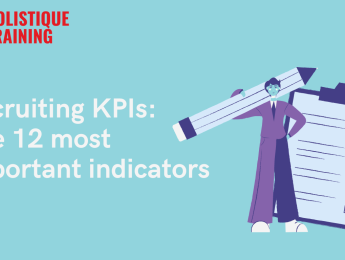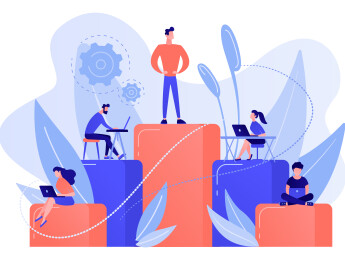Introduction
Recruiting Key Performance Indicators (KPIs) are critical tools for assessing the success and efficiency of hiring processes within an organization. By tracking these metrics, such as time to fill, cost per hire, and quality of hire, companies can gain a comprehensive understanding of their recruitment performance. Measuring these KPIs is essential for identifying areas for improvement, optimizing recruitment strategies, and ensuring that the hiring process aligns with organizational goals. Effective KPI analysis enables organizations to make informed decisions, enhance their talent acquisition efforts, and ultimately secure the best candidates to drive long-term success.
Time to Fill
Time to Fill is a critical recruitment KPI that measures the number of days it takes to fill a job opening, starting from the moment a position is approved until the day a candidate accepts the offer. This metric is significant because it reflects the efficiency of your recruitment process and directly impacts the business. A shorter Time to Fill indicates that the hiring process is streamlined and that roles are being filled promptly, reducing the strain on existing staff and minimizing potential productivity losses. Conversely, a prolonged Time to Fill can signal bottlenecks in the recruitment process, such as inefficient sourcing channels, slow decision-making, or an overly complex interview process.
To measure Time to Fill, you can calculate the average number of days it takes to fill all open positions over a specific period. This is done by summing the days it took to fill each role and dividing by the total number of roles filled. For instance, if you filled three positions in 45, 60, and 30 days, your average Time to Fill would be 45 days.
Improving Time to Fill involves several strategic actions:
- Optimize Job Descriptions: Ensure that job descriptions are clear, accurate, and appealing to attract the right candidates quickly.
- Streamline the Application Process: Reduce unnecessary steps in the application and interview process to expedite hiring decisions.
- Enhance Sourcing Channels: Focus on sourcing candidates from channels that consistently provide high-quality applicants in shorter time frames.
- Leverage Technology: Use Applicant Tracking Systems (ATS) and other HR technologies to automate repetitive tasks and speed up communication.
- Improve Decision-Making: Train hiring managers to make quicker, more informed decisions without compromising candidate quality.
By regularly monitoring and refining these aspects, organizations can significantly reduce their Time to Fill, ensuring they secure top talent efficiently and maintain overall productivity.
Time to Hire
Time to Hire is a vital recruitment metric that measures the number of days between the moment a candidate applies or is sourced and the day they accept the job offer. Unlike Time to Fill, which considers the entire recruitment process from the job opening to offer acceptance, Time to Hire focuses specifically on the duration of the candidate’s journey once they enter the hiring pipeline. This metric is essential because it directly reflects the efficiency of the candidate assessment and decision-making processes. A shorter Time to Hire can lead to a better candidate experience, as it demonstrates that your organization is decisive and values the candidate’s time. Moreover, reducing Time to Hire helps in securing top talent, as highly qualified candidates often receive multiple offers and are likely to accept the one that comes first.
To measure Time to Hire, track the number of days it takes from the first point of contact with the candidate—whether through application, referral, or sourcing—until the candidate formally accepts the job offer. This can be averaged across multiple hires to assess the overall efficiency of your hiring process. For example, if three candidates were hired with timelines of 20, 25, and 15 days respectively, the average Time to Hire would be 20 days.
Optimizing Time to Hire requires a strategic approach that addresses potential delays in the recruitment process:
- Pre-Screen Candidates Efficiently: Implement quick and effective pre-screening techniques to filter out unqualified candidates early in the process.
- Streamline Interview Processes: Reduce the number of interview rounds and ensure that they are scheduled promptly to avoid unnecessary delays.
- Enhance Collaboration: Foster better communication and collaboration between recruiters and hiring managers to expedite decision-making.
- Leverage Data and Analytics: Use recruitment data to identify bottlenecks in the hiring process and address them proactively.
- Maintain a Talent Pool: Build and maintain a strong talent pool to shorten the sourcing phase and enable faster hiring decisions when roles open up.
By focusing on these strategies, organizations can reduce their Time to Hire, ensuring a faster and more efficient recruitment process that attracts and retains top candidates before competitors do.
Cost per Hire
Cost per Hire is a fundamental recruitment metric that calculates the total expense incurred to hire a new employee. This metric is crucial for understanding the financial efficiency of your recruitment process, as it includes all costs associated with sourcing, recruiting, and onboarding a candidate. These costs typically encompass expenses such as job advertisements, recruitment agency fees, background checks, interview costs, onboarding resources, and the time spent by HR and hiring managers. By analyzing Cost per Hire, organizations can gain insights into their recruitment strategy's financial impact and identify areas where costs can be controlled or reduced without compromising the quality of hires.
Calculating Cost per Hire involves summing all the recruitment-related expenses and dividing by the total number of hires within a specific period. The formula is:
Cost per Hire=Total Recruitment CostsTotal Number of Hires\text{Cost per Hire} = \frac{\text{Total Recruitment Costs}}{\text{Total Number of Hires}}Cost per Hire=Total Number of HiresTotal Recruitment Costs
For instance, if a company spends $100,000 on recruitment and hires 20 employees during that period, the Cost per Hire would be $5,000. This metric can be further broken down to analyze costs per department, role, or location, allowing for more granular insights and targeted cost-saving measures.
Reducing recruitment costs requires a strategic approach that balances cost-efficiency with the need to attract and hire top talent:
- Optimize Sourcing Channels: Focus on the most effective and cost-efficient sourcing channels, such as employee referrals or internal promotions, to reduce dependency on expensive job boards or recruitment agencies.
- Automate Recruitment Processes: Implement recruitment automation tools that reduce the time and manual effort required for tasks like resume screening, interview scheduling, and communication, thereby lowering overall costs.
- Negotiate with Vendors: Review contracts with recruitment agencies, job boards, and other vendors to negotiate better rates or explore alternative services that offer more value for money.
- Improve Retention: Reducing turnover by hiring the right candidates and providing a positive work environment can minimize the need for frequent hiring, thus lowering long-term recruitment costs.
- Leverage Data and Analytics: Use data to track and analyze recruitment expenses regularly, identifying areas where spending can be reduced without affecting the quality of hires.
By carefully monitoring and managing these aspects, organizations can effectively lower their Cost per Hire, making the recruitment process more financially sustainable while still attracting and securing high-quality candidates.
Offer Acceptance Rate
Offer Acceptance Rate is a key recruitment metric that measures the percentage of job offers extended by an organization that are accepted by candidates. This metric is important because it reflects the attractiveness of your job offers and can indicate the effectiveness of your overall recruitment strategy. A high Offer Acceptance Rate suggests that the organization is successful in making compelling offers that meet candidates' expectations regarding salary, benefits, work environment, and career opportunities. Conversely, a low Offer Acceptance Rate may signal issues such as uncompetitive compensation packages, misalignment between job expectations and the role, or a lackluster candidate experience, all of which can lead to delays in filling positions and increased recruitment costs.
To calculate the Offer Acceptance Rate, divide the number of accepted job offers by the total number of offers extended and multiply by 100 to get a percentage:
Offer Acceptance Rate=(Number of Accepted OffersTotal Number of Offers Extended)×100\text{Offer Acceptance Rate} = \left(\frac{\text{Number of Accepted Offers}}{\text{Total Number of Offers Extended}}\right) \times 100Offer Acceptance Rate=(Total Number of Offers ExtendedNumber of Accepted Offers)×100
For example, if an organization extends 20 job offers and 15 are accepted, the Offer Acceptance Rate would be 75%. Monitoring this rate over time can help identify trends and pinpoint areas where improvements are needed.
Improving Candidate Offer Acceptance involves several strategic actions aimed at aligning the job offer with the candidates' needs and expectations:
- Conduct Market Research: Ensure that your compensation packages are competitive within the industry by regularly reviewing market salary data and adjusting offers accordingly.
- Enhance Communication: Clearly communicate the value proposition of the role, including growth opportunities, company culture, and benefits, to make the offer more appealing.
- Personalize Offers: Tailor job offers to the individual candidate's priorities, such as flexible working arrangements, career development opportunities, or additional benefits that resonate with them.
- Streamline the Recruitment Process: Ensure that the recruitment process is efficient and positive, leaving candidates with a good impression of the organization, which can increase the likelihood of offer acceptance.
- Engage with Candidates Early: Build a strong relationship with candidates throughout the hiring process by maintaining open lines of communication, addressing concerns promptly, and keeping them informed about next steps.
By focusing on these strategies, organizations can improve their Offer Acceptance Rate, ensuring that they secure top talent more efficiently and reduce the time and costs associated with unaccepted offers and prolonged hiring processes.
Quality of Hire
Quality of Hire is a crucial recruitment KPI that measures the value a new employee brings to the organization in terms of performance, productivity, and cultural fit. This metric goes beyond simply filling a position—it evaluates whether the hired candidate meets or exceeds the expectations set for the role and contributes positively to the company’s goals. Assessing Quality of Hire is essential because it directly correlates with the long-term success of recruitment efforts, influencing employee retention, team dynamics, and overall organizational performance. A high Quality of Hire indicates that the recruitment process is effective in selecting candidates who not only have the right skills but also align with the company’s values and culture.
Assessing Quality of Hire typically involves tracking key performance indicators (KPIs) related to the new hire’s job performance, engagement, and retention over a defined period, usually within the first 6 to 12 months of employment. These indicators can include:
- Performance Reviews: Evaluating the new employee’s performance against the objectives and expectations set during the hiring process.
- Productivity Metrics: Measuring the new hire’s output and contribution to team goals, comparing it with peers or industry benchmarks.
- Cultural Fit: Assessing how well the new employee integrates with the company’s culture, values, and team dynamics.
- Retention Rates: Monitoring whether the new hire stays with the company for a significant period, indicating satisfaction and engagement.
- Feedback from Managers and Peers: Gathering input from supervisors and colleagues on the new hire’s performance and collaboration within the team.
Enhancing Quality of Hire requires a multifaceted approach that starts with refining the recruitment process and extends into onboarding and development:
- Clarify Job Descriptions: Ensure that job descriptions accurately reflect the skills, experience, and attributes needed for the role, helping attract the right candidates.
- Use Structured Interviews: Implement structured interview techniques that focus on assessing the candidate’s competencies, problem-solving abilities, and cultural fit, leading to better hiring decisions.
- Leverage Predictive Analytics: Utilize data and predictive analytics tools to assess candidate potential based on historical hiring data, improving the likelihood of high-quality hires.
- Enhance Onboarding Programs: Develop comprehensive onboarding programs that equip new hires with the knowledge, tools, and support they need to succeed in their roles quickly.
- Provide Continuous Development: Offer ongoing training and development opportunities to help new employees grow in their roles, which can enhance their performance and increase overall Quality of Hire.
By focusing on these methods, organizations can improve the Quality of Hire, ensuring that new employees are not only capable of performing their roles effectively but also contribute to the company’s long-term success and cultural harmony.
Candidate Experience
Candidate Experience is a critical aspect of the recruitment process that encompasses every interaction and touchpoint a candidate has with an organization, from the initial job search to the final hiring decision and even onboarding. A positive Candidate Experience is essential for attracting top talent, building a strong employer brand, and ensuring that candidates, whether hired or not, leave with a favorable impression of the company. Conversely, a poor Candidate Experience can deter top candidates from accepting offers, damage the company's reputation, and even lead to negative reviews on platforms like Glassdoor, which can impact future hiring efforts.
Measuring Candidate Satisfaction involves collecting feedback from candidates at various stages of the recruitment process to gauge their overall experience. This can be done through:
- Surveys and Feedback Forms: Send post-interview surveys or feedback forms to candidates to assess their satisfaction with the recruitment process, including aspects like communication, timeliness, and the professionalism of interviewers.
- Candidate Net Promoter Score (NPS): Use the NPS methodology to ask candidates how likely they are to recommend your company to others based on their experience, providing a clear metric for satisfaction.
- Interview and Application Drop-off Rates: Analyze the points in the application or interview process where candidates are most likely to drop out, indicating potential issues in the experience.
- Social Media and Review Monitoring: Keep an eye on candidate reviews on platforms like LinkedIn, Glassdoor, or Indeed to gather insights into their experiences and perceptions of your recruitment process.
Enhancing the Candidate Journey requires a comprehensive approach that prioritizes clear communication, efficiency, and empathy:
- Improve Communication: Maintain regular, transparent communication with candidates throughout the recruitment process, updating them on their application status, next steps, and timelines.
- Simplify the Application Process: Streamline the application process to be user-friendly, minimizing unnecessary steps or requirements that could frustrate candidates.
- Provide a Consistent Experience: Ensure that all candidates receive a consistent and professional experience, regardless of the outcome, by standardizing interview processes and training interviewers on best practices.
- Offer Constructive Feedback: Provide timely and constructive feedback to candidates who are not selected, which can leave a positive impression and encourage them to reapply in the future.
- Create a Positive Onboarding Experience: Once a candidate is hired, ensure a smooth transition into the company with a well-organized onboarding program that makes them feel welcomed and valued from day one.
By focusing on these strategies, organizations can significantly enhance the Candidate Experience, leading to higher satisfaction rates, increased acceptance of job offers, and a stronger overall employer brand that attracts and retains top talent.
Sourcing Channel Effectiveness
Sourcing Channel Effectiveness is a crucial recruitment metric that evaluates the performance of various channels used to attract and source candidates. These channels may include job boards, social media platforms, recruitment agencies, employee referrals, company career pages, and more. Understanding the effectiveness of each sourcing channel helps organizations allocate resources efficiently, optimize recruitment strategies, and ensure that the best candidates are reached. A well-rounded approach to sourcing channels not only enhances the quality of candidates but also improves the overall efficiency and cost-effectiveness of the recruitment process.
To evaluate the effectiveness of different recruitment channels, consider the following metrics and methods:
- Source of Hire: Track where your successful candidates come from by analyzing the source of each hire. This involves identifying which channels consistently produce high-quality candidates who perform well and stay longer with the company.
- Cost per Channel: Calculate the cost associated with each sourcing channel by dividing the total spend on that channel by the number of hires it generates. This helps in determining which channels provide the best return on investment.
- Time to Fill by Channel: Measure the average time it takes to fill positions sourced from each channel. This can highlight which channels are quicker in delivering candidates who match your needs.
- Quality of Candidates: Assess the quality of candidates from each channel based on performance reviews, retention rates, and other key performance indicators (KPIs). This helps in understanding which channels provide candidates who excel in their roles.
Optimizing sourcing strategies involves refining and focusing efforts on the most effective channels while reducing reliance on less effective ones:
- Analyze Data Regularly: Use recruitment analytics to regularly review the performance of each sourcing channel. This data-driven approach helps in identifying trends and making informed decisions about where to invest resources.
- Leverage High-Performing Channels: Allocate more resources to channels that consistently deliver high-quality candidates. For example, if employee referrals are producing top performers, consider enhancing your referral program with incentives or additional support.
- Experiment with New Channels: Test new or emerging recruitment channels to broaden your sourcing strategy and reach diverse talent pools. This can include niche job boards, industry-specific forums, or new social media platforms.
- Optimize Job Advertisements: Tailor job advertisements for each channel to maximize their effectiveness. For instance, crafting specific messages for social media platforms or using targeted ads on job boards can improve engagement and response rates.
- Build Partnerships: Strengthen relationships with high-performing recruitment agencies or networks to enhance the quality and speed of candidate sourcing.
By focusing on these strategies, organizations can effectively evaluate and optimize their sourcing channels, ensuring that they attract and hire the best candidates while maximizing their recruitment efforts' efficiency and cost-effectiveness.
Applicant-to-Hire Ratio
Applicant-to-Hire Ratio is a vital recruitment metric that measures the efficiency of the hiring process by calculating the ratio of applicants to the number of hires made. This metric provides insight into the effectiveness of your recruitment strategy and helps identify how well your job postings and selection processes convert potential candidates into actual hires. A lower Applicant-to-Hire Ratio indicates a more efficient process with higher quality applicants, while a higher ratio suggests potential issues in candidate screening or the need for more effective sourcing strategies.
To understand the Applicant-to-Hire Ratio, calculate it using the following formula:
Applicant-to-Hire Ratio=Total Number of ApplicantsTotal Number of Hires\text{Applicant-to-Hire Ratio} = \frac{\text{Total Number of Applicants}}{\text{Total Number of Hires}}Applicant-to-Hire Ratio=Total Number of HiresTotal Number of Applicants
For example, if you receive 100 applications and make 10 hires, the Applicant-to-Hire Ratio is 10:1. Monitoring this ratio over time can help assess the effectiveness of your recruitment efforts and identify areas for improvement.
Techniques to improve Applicant Conversion involve refining the recruitment process to attract and select high-quality candidates more efficiently:
- Enhance Job Descriptions: Craft clear, engaging, and detailed job descriptions that accurately reflect the role's requirements and appeal to the right candidates, thereby improving the quality of applicants.
- Optimize Job Postings: Post job ads on platforms where your target candidates are most likely to be found, and tailor the messaging to resonate with them, which can lead to a higher proportion of suitable applications.
- Implement Pre-Screening Tools: Use pre-screening questions or assessments to filter out unqualified candidates early in the process, ensuring that only those who meet the essential criteria move forward.
- Streamline the Application Process: Simplify and shorten the application process to reduce drop-offs and make it easier for qualified candidates to apply, thus improving the overall conversion rate.
- Leverage Technology: Utilize Applicant Tracking Systems (ATS) and recruitment software to efficiently manage and assess applications, track candidate progress, and streamline the hiring process.
- Improve Candidate Communication: Maintain open and timely communication with candidates throughout the process to keep them engaged and informed, which can positively impact their decision to proceed and accept offers.
- Train Hiring Managers: Provide training for hiring managers to improve their interviewing and decision-making skills, ensuring that they effectively identify and select the best candidates.
By implementing these techniques, organizations can enhance their Applicant-to-Hire Ratio, making the recruitment process more efficient and effective in converting qualified applicants into successful hires.
Retention Rate
Retention Rate is a crucial metric that measures the percentage of employees who remain with an organization over a specific period. This metric is important because it reflects the company's ability to retain its talent and maintain a stable workforce. High retention rates are often indicative of a positive work environment, effective management practices, and employee satisfaction, while low retention rates can signal issues such as poor job satisfaction, inadequate compensation, or management problems. Retaining employees is essential for organizational success, as high turnover can lead to increased recruitment and training costs, disruptions in workflow, and loss of institutional knowledge.
To calculate the Retention Rate, use the following formula:
Retention Rate=(Number of Employees Remaining at End of PeriodNumber of Employees at Start of Period)×100\text{Retention Rate} = \left(\frac{\text{Number of Employees Remaining at End of Period}}{\text{Number of Employees at Start of Period}}\right) \times 100Retention Rate=(Number of Employees at Start of PeriodNumber of Employees Remaining at End of Period)×100
For example, if you start with 100 employees at the beginning of the year and 90 remain at the end of the year, the Retention Rate would be 90%. Monitoring this metric helps in understanding trends in employee stability and making informed decisions to improve retention strategies.
Enhancing Retention Rate involves a variety of strategies aimed at increasing employee satisfaction and engagement:
- Improve Onboarding: Implement a comprehensive onboarding program that helps new hires integrate smoothly into the organization, feel welcomed, and understand their roles and the company culture.
- Offer Competitive Compensation and Benefits: Regularly review and adjust compensation packages to ensure they are competitive within the industry and meet employee expectations for salary, benefits, and perks.
- Foster a Positive Work Environment: Create a supportive and inclusive work environment that values employee contributions, promotes work-life balance, and encourages open communication.
- Provide Career Development Opportunities: Offer training, mentorship, and career advancement opportunities to help employees grow within the organization and feel invested in their long-term development.
- Conduct Employee Feedback Surveys: Regularly collect feedback from employees to understand their needs, concerns, and satisfaction levels. Use this information to address any issues and make improvements.
- Recognize and Reward Performance: Implement recognition programs that acknowledge and reward employees for their hard work and achievements, which can boost morale and motivation.
- Address Workplace Issues Promptly: Actively address and resolve any workplace conflicts or issues that could impact employee satisfaction and retention.
By focusing on these strategies, organizations can enhance their Retention Rate, leading to a more stable and engaged workforce, reduced turnover costs, and improved overall organizational performance.
Diversity Hiring Metrics
Diversity Hiring Metrics are essential for evaluating and improving the effectiveness of an organization's diversity and inclusion (D&I) initiatives. These metrics track the representation of diverse groups within the workforce and measure the success of efforts to create a more inclusive work environment. Effective diversity hiring is not only about meeting quotas but also about fostering a workplace where diverse perspectives are valued and integrated into the organizational culture. Tracking these metrics helps organizations ensure they are making progress toward their D&I goals, identifying areas for improvement, and creating a more equitable hiring process.
To track diversity and inclusion, organizations typically use several key metrics:
- Diversity Ratio: Measure the proportion of employees from various demographic groups (e.g., gender, ethnicity, age, disability) compared to the total workforce. This helps assess how well the organization is representing different groups.
- Diversity Hiring Rate: Calculate the percentage of new hires from underrepresented groups relative to the total number of hires. This metric indicates the effectiveness of recruitment strategies in attracting diverse candidates.
- Promotion Rates by Demographic: Track the rate at which employees from diverse backgrounds are promoted compared to their peers. This helps assess whether there are equitable opportunities for advancement within the organization.
- Retention Rates by Demographic: Monitor the retention rates of employees from different demographic groups to identify any disparities that might suggest issues with inclusion or workplace culture.
- Application and Interview Demographics: Analyze the diversity of applicants and candidates who reach the interview stage to ensure that the recruitment process is fair and equitable from the outset.
Implementing effective diversity strategies involves several key actions aimed at fostering an inclusive and diverse workplace:
- Set Clear Diversity Goals: Establish specific, measurable diversity and inclusion goals aligned with the organization’s mission and values. These goals should be integrated into the overall business strategy and communicated across the organization.
- Enhance Recruitment Practices: Develop recruitment strategies that reach diverse talent pools, such as partnering with diverse professional organizations, attending job fairs focused on underrepresented groups, and using inclusive job descriptions.
- Implement Unconscious Bias Training: Provide training to employees and hiring managers to recognize and mitigate unconscious biases in the recruitment, selection, and evaluation processes.
- Create an Inclusive Culture: Foster a workplace culture that values diversity by promoting inclusivity in company policies, encouraging diverse perspectives, and celebrating cultural differences through events and recognition.
- Monitor and Report Progress: Regularly review and report on diversity metrics to track progress toward goals and identify areas needing improvement. Transparency in reporting can build trust and accountability.
- Offer Mentorship and Development Programs: Provide mentorship and development opportunities specifically targeted at underrepresented groups to support their career growth and advancement within the organization.
By focusing on these strategies, organizations can effectively track and improve their diversity hiring metrics, creating a more inclusive and equitable workplace that attracts and retains a diverse range of talent.
Recruitment Funnel Effectiveness
Recruitment Funnel Effectiveness is a critical metric that evaluates how well an organization’s hiring process converts candidates at each stage of the recruitment funnel. The recruitment funnel, or hiring funnel, represents the stages candidates go through from initial application to final hire. Analyzing the effectiveness of this funnel helps organizations identify bottlenecks, optimize processes, and improve overall hiring efficiency.
The recruitment funnel typically includes the following stages:
- Awareness: Potential candidates become aware of the job opportunity through job postings, company websites, or other recruitment channels.
- Application: Candidates submit their applications for the position.
- Screening: Applications are reviewed, and candidates are screened based on their qualifications and fit for the role.
- Interviewing: Shortlisted candidates are invited to interviews to assess their skills, experience, and cultural fit.
- Offer: Selected candidates receive a job offer.
- Hiring: Candidates accept the offer and join the organization.
Analyzing the Recruitment Funnel involves examining key metrics at each stage to understand conversion rates and identify areas for improvement:
- Conversion Rates: Calculate the percentage of candidates who move from one stage of the funnel to the next. For example, the ratio of candidates who move from the application stage to the screening stage, and then to interviews, and so on.
- Time in Each Stage: Measure the average time candidates spend at each stage of the funnel to identify any delays or inefficiencies.
- Candidate Drop-Off Rates: Analyze where candidates are most likely to drop out of the process, indicating potential issues or dissatisfaction.
- Source Effectiveness: Assess which recruitment channels or sources provide the most successful candidates who progress through the funnel.
Streamlining the hiring process involves implementing strategies to optimize each stage of the recruitment funnel and improve overall effectiveness:
- Enhance Job Descriptions: Ensure job descriptions are clear, detailed, and aligned with the role’s requirements to attract suitable candidates and reduce unqualified applications.
- Implement Efficient Screening Tools: Use applicant tracking systems (ATS) and automated screening tools to quickly and accurately assess candidate qualifications and fit.
- Standardize Interview Processes: Develop a standardized interview process with structured questions and evaluation criteria to ensure consistency and fairness in candidate assessment.
- Improve Communication: Maintain regular and transparent communication with candidates throughout the recruitment process to keep them engaged and informed, reducing drop-off rates.
- Optimize Recruitment Channels: Focus on high-performing recruitment channels and refine strategies to reach and attract the best candidates effectively.
- Reduce Time-to-Hire: Streamline the hiring process to minimize delays and ensure a quicker turnaround from application to offer acceptance, which can improve candidate experience and acceptance rates.
By analyzing and optimizing the recruitment funnel, organizations can enhance their hiring processes, increase efficiency, and improve the quality of hires, ultimately contributing to better overall recruitment outcomes.
Hiring Manager Satisfaction
Hiring Manager Satisfaction is a crucial metric that measures the level of satisfaction hiring managers have with the recruitment process and the quality of candidates provided by the HR or recruitment team. This metric is important because hiring managers play a pivotal role in the hiring process, and their satisfaction can significantly impact the effectiveness and efficiency of recruitment efforts. High satisfaction levels indicate that the recruitment team is successfully meeting the needs of hiring managers, while low satisfaction may signal areas that require improvement.
Assessing Hiring Manager Feedback involves collecting and analyzing feedback from hiring managers about various aspects of the recruitment process:
- Surveys and Interviews: Conduct regular surveys or interviews with hiring managers to gather their opinions on the quality of candidates, the efficiency of the recruitment process, and their overall satisfaction with the support provided by the HR team.
- Feedback on Candidates: Evaluate feedback from hiring managers regarding the suitability of candidates for the roles they are hired for, including how well they meet job requirements and fit into the team.
- Process Evaluation: Ask hiring managers to assess the recruitment process, including the speed of filling positions, the accuracy of job descriptions, and the effectiveness of communication throughout the hiring process.
Improving Collaboration with Hiring Managers involves implementing strategies to enhance the working relationship between the recruitment team and hiring managers, leading to better recruitment outcomes:
- Align Expectations: Ensure that hiring managers and the recruitment team have a clear understanding of the role requirements, job specifications, and candidate expectations from the outset. Regularly review and adjust these expectations as needed.
- Regular Communication: Maintain open and ongoing communication with hiring managers throughout the recruitment process. Schedule regular check-ins to discuss progress, address any concerns, and provide updates on candidate status.
- Provide Training: Offer training to hiring managers on best practices for interviewing, evaluating candidates, and using recruitment tools effectively. This can enhance their ability to make informed hiring decisions and collaborate effectively with the recruitment team.
- Set Clear KPIs: Establish and agree upon key performance indicators (KPIs) with hiring managers to measure recruitment success and align efforts with their needs. Track these KPIs and use the data to drive continuous improvement.
- Streamline Processes: Work together to identify and eliminate any inefficiencies or obstacles in the hiring process. Simplify procedures, reduce unnecessary steps, and ensure that both teams are working towards common goals.
- Solicit and Act on Feedback: Actively seek feedback from hiring managers on the recruitment process and candidate quality. Use this feedback to make necessary adjustments and improvements to better meet their needs and expectations.
By focusing on these strategies, organizations can enhance Hiring Manager Satisfaction, leading to more effective collaboration between recruitment teams and hiring managers, improved candidate quality, and overall better hiring outcomes.
Table: Summary of the 12 Key Recruiting Indicators
KPI | Description | Importance |
Time to Fill | Time taken from job posting to hiring. | Measures recruitment efficiency and process speed. |
Time to Hire | Time from candidate application to offer acceptance. | Indicates the speed of hiring and candidate experience. |
Cost per Hire | Total cost involved in recruiting and hiring a new employee. | Helps evaluate and manage recruitment expenses. |
Quality of Hire | Performance and fit of new hires compared to expectations. | Reflects the effectiveness of hiring decisions. |
Offer Acceptance Rate | Percentage of job offers accepted by candidates. | Shows the attractiveness of job offers and recruitment appeal. |
Candidate Experience | Satisfaction level of candidates throughout the hiring process. | Impacts company reputation and candidate attraction. |
Sourcing Channel Effectiveness | Efficiency of different recruitment channels in attracting hires. | Optimizes sourcing strategies and resource allocation. |
Applicant-to-Hire Ratio | Ratio of applicants to hires made. | Indicates recruitment process efficiency and candidate quality. |
Retention Rate | Percentage of employees who remain with the organization over time. | Measures employee satisfaction and organizational stability. |
Diversity Hiring Metrics | Representation of diverse groups within the workforce. | Ensures equitable hiring practices and supports inclusivity. |
Recruitment Funnel Effectiveness | Effectiveness of each stage in the recruitment funnel. | Identifies bottlenecks and optimizes the hiring process. |
Hiring Manager Satisfaction | Satisfaction of hiring managers with the recruitment process and candidates. | Enhances collaboration and effectiveness in hiring. |
Conclusion
Recruiting Key Performance Indicators (KPIs) play a pivotal role in evaluating and refining an organization's hiring strategies. By systematically tracking metrics such as time to fill, cost per hire, and candidate satisfaction, companies can gain critical insights into their recruitment processes and identify opportunities for enhancement. Implementing best practices for monitoring and improving recruitment performance includes setting clear goals, utilizing data-driven insights, and fostering effective collaboration between HR and hiring managers. Adopting these practices ensures a more efficient, cost-effective, and successful recruitment process, ultimately leading to better talent acquisition outcomes and a stronger organizational workforce.

























